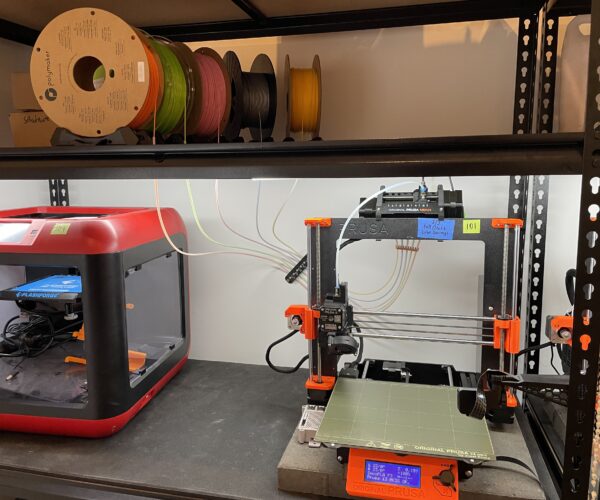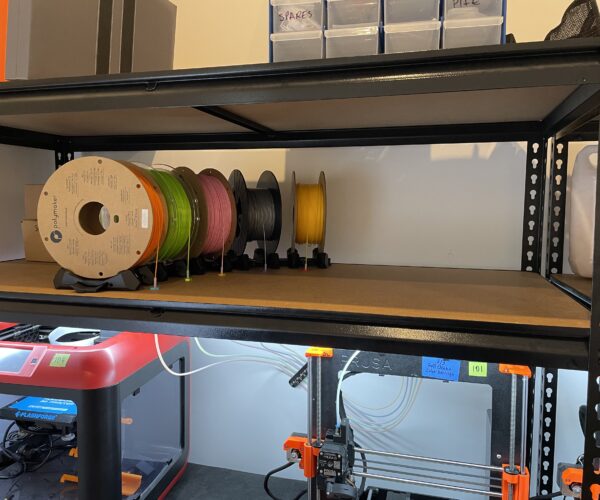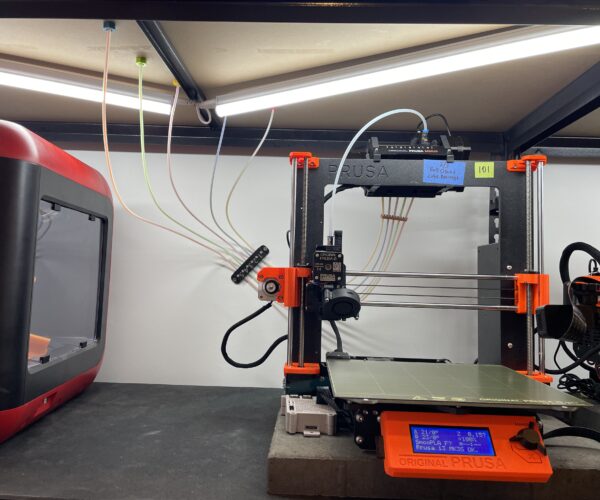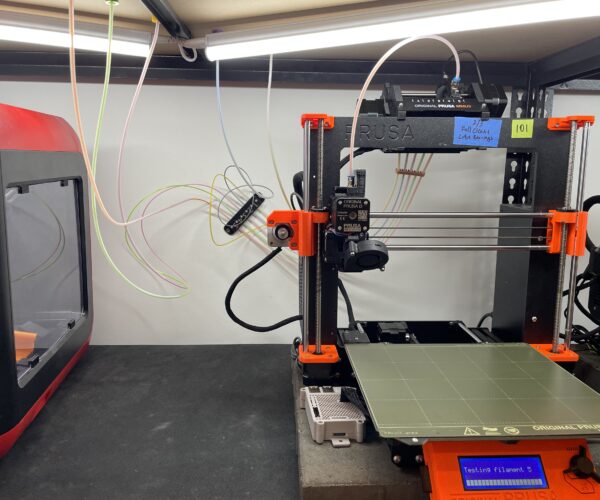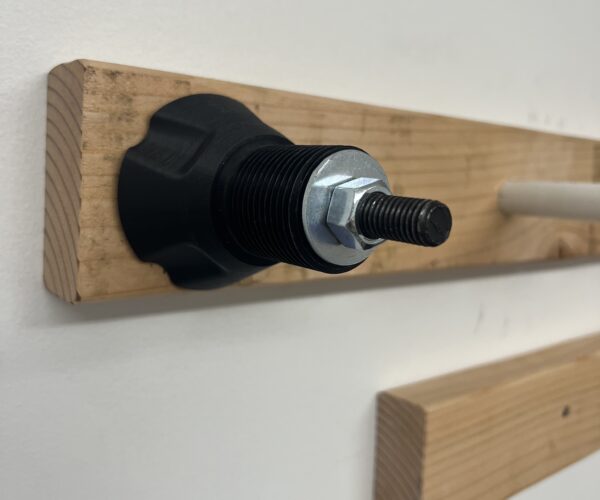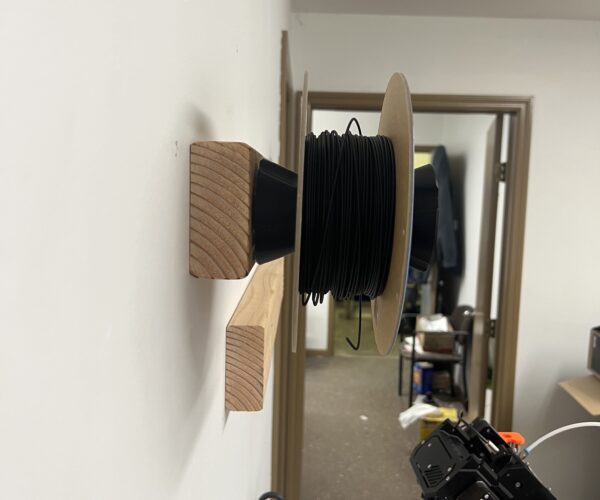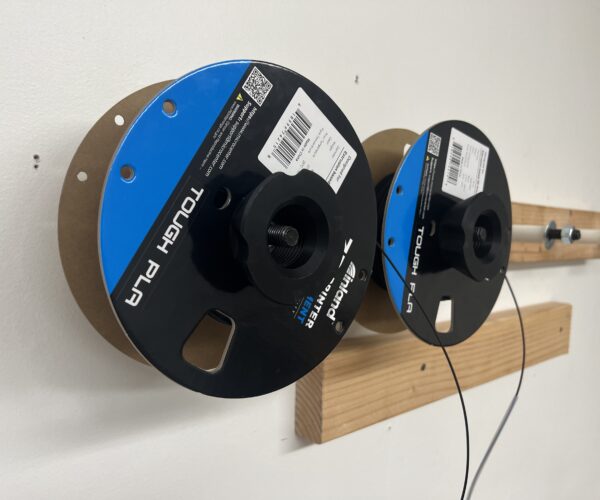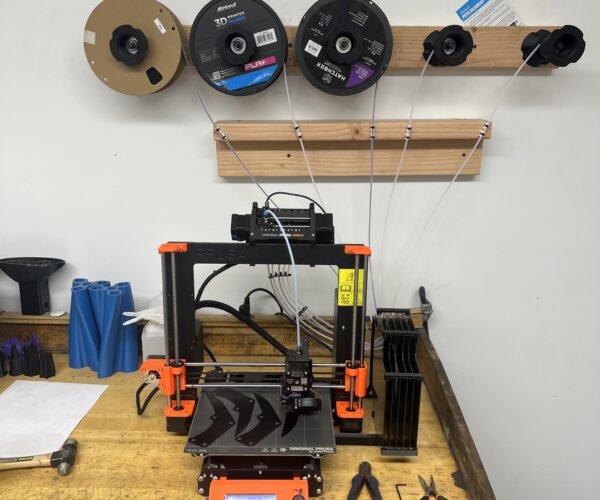RE: Is the buffer really necessary?
Hello,
The small wheels have begun sticking, leading to significant surges in filament tension. My extruder starts clicking, intermittently at first, then more regularly, producing gaps in the prints, and ultimately failed prints.
I am working on a axle-based setup using these:
The will be suspended on lengths of PVC pipe, affixed to the wall. This will allow easy access for swapping spools, and minimal filament tension.
Thanks. Brad.
The small wheels have begun sticking,
What are you using to lubricate them?
A squirt of WD40 or similar to wash out the old, dusty lubricant followed by a few drops of good quality oil should rejuvenate them.
Cheerio,
RE: Is the buffer really necessary?
The small wheels have begun sticking,
What are you using to lubricate them?
A squirt of WD40 or similar to wash out the old, dusty lubricant followed by a few drops of good quality oil should rejuvenate them.
Cheerio,
There's no lubricant to start with
Please help me out by downloading a model it's free and easy but really helps me out https://www.printables.com/@Hello_474427/models
So...?
Cheerio,
RE: Is the buffer really necessary?
Diem,
That seems like a maintenance item to me, and will always need addressing.
Truthfully, from an engineering standpoint, rolling on the rims of the spools is less than ideal, anyway. These small wheels have to turn more than seven times as much as the spool, and the axels are nowhere near a precision fit in the holder bodies. Plus, any deformation in the rims of the spool, which is very common, especially with the fiberboard spools, will manifest in variances in filament tension. Mounting these spool holders on PVC pipe is virtually frictionless, and only adds a minimal amount of labor to a spool swap.
Thanks. Brad.
RE: Is the buffer really necessary?
Since I got another printer that has two extruders, I seldom use the MMU anymore, but it is handy for jobs that require more than two colors.
When I use it, I take the printer out of the enclosure, set it on the spare bedroom floor, and use the space behind the printer as the equivalent of a buffer.
It actually works quite well, but takes a lot of space and, of course, I do not leave it set up that way.
RE: Is the buffer really necessary?
Diem,
So far, I'm very pleased with the performance of the new setup. I am in the process of printing a few more spool holders before finalizing the setup, but the spool I'm working from right now is working flawlessly. As soon as I get these spools done, I will be setting up to do a 26hr three color print that will, for the most part, confirm the viability of the setup. I'm currently working "open air", so my next adjustment will be an enclosure for the rig that will keep the active spools as dry as possible.
Thanks. Brad.
RE: Is the buffer really necessary?
Firstly, sorry for necro-bumping, but this thread is the top result on Google for 'MMU3 Air Buffer' so I thought I'd add my setup to it for anyone else in the future.
Based on @joantabb 's description and diagram, I've setup my MMU3 in a similar way with the spools on a shelf above feeding to MMU tubes via hanging PTFE tubes. The buffering just pushes the filaments into the free space next to the printer, and so far there have been no tangles - it all seems to work really well!
Thanks for your old post @joantabb - it helped a lot!
Image 1: Spools loaded and unbuffered
Image 2: Top shelf showing filament passing through shelf via PTFE tubes
Image 3: Closer image showing the PTFE tube management
Image 4: All filaments fully buffered out into the air. The grey filament is nearing the end of the spool, hence why it is curled up the most.
@3dwillem
Sorry, due to covid precautions I am 70 miles from My MMU printers...
However if you have a good imagination, this diagram might help
RE: Is the buffer really necessary?
This works with the MMU3 as well...
Unapproved by Prusa... of course...
I recently had 5 rolls of filament on a horizontal broom handle about three feet from the printer. filament coming off the bottom of the roll and going into the printer feed tubes . buffering in free space... worked fine...
🙂
regards Joan
I try to make safe suggestions,You should understand the context and ensure you are happy that they are safe before attempting to apply my suggestions, what you do, is YOUR responsibility.Location Halifax UK
RE: Is the buffer really necessary?
This is my current setup, and I am very pleased with its performance. I have had a few incidents involving the ends of the tubes and the sight windows in the spools, but shortening the tubes a bit has resolved that. I still use the buffer that came with the MMU. It works fine now that I got my brains about me and load the filament as prescribed.
Thanks. Brad.
